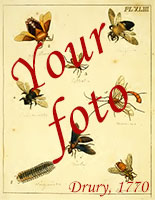The species Diadasia tropicalis (Cockerell, 1918) has by now no sponsor. You can take the sponsorship for Diadasia tropicalis (Cockerell, 1918) and here at this place your name and your foto would be placed.
With the sponsorship you support the further development, data update and improvment of data quality for all HymIS-projects.
If you have questions, just send us an email. If you want to take a sponsorship for a species, please send us an email (sponsorship@hymis.net) with your name and a picture with not more than 1 MB and of course the name of the species you want to adopt.
Have a look at one example page or read more...

